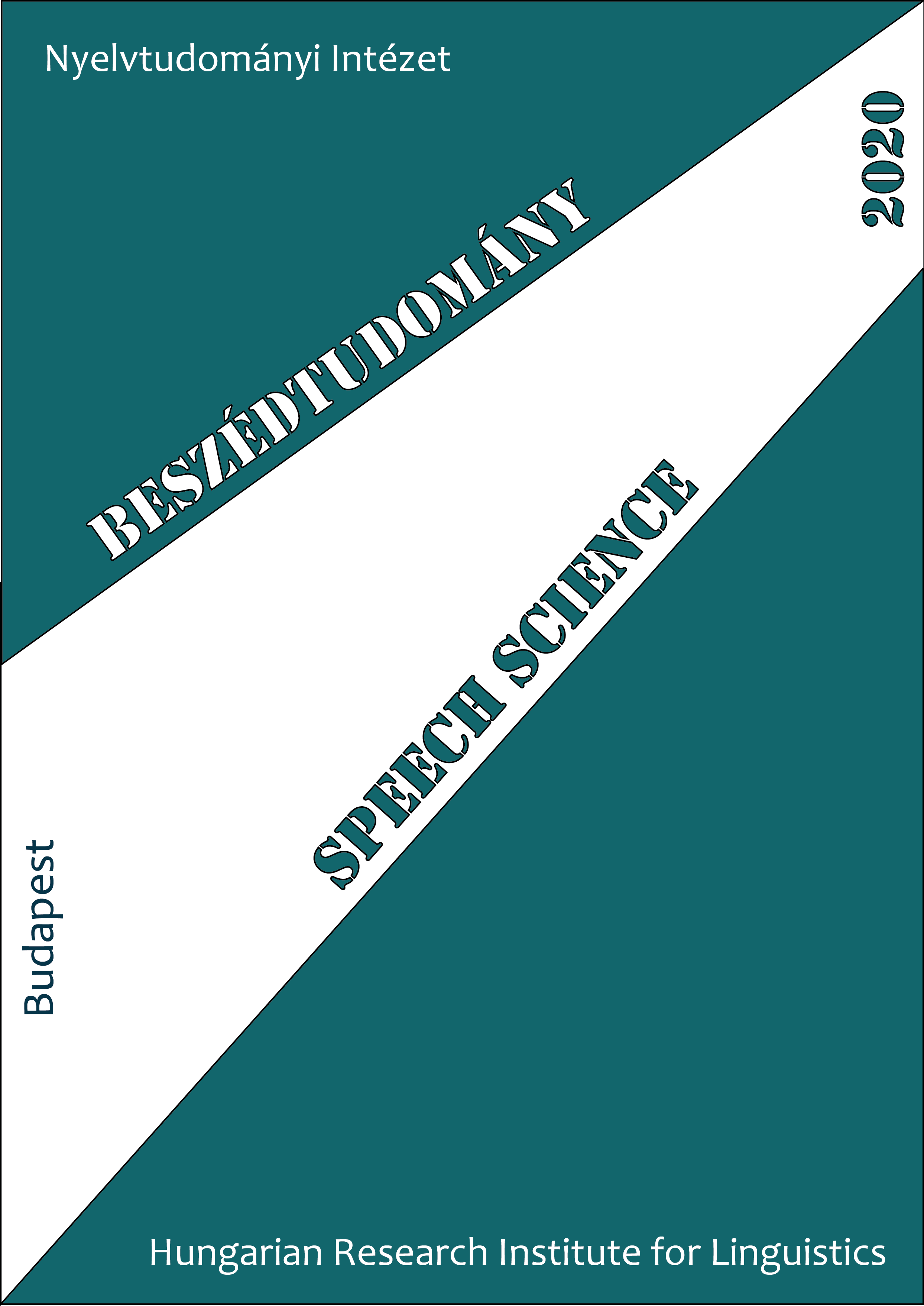Az egyszerre beszélések jellemzői háromfős társalgásokban
Absztrakt
Overlapping speech in spontaneous conversations Overlapping speech is claimed to be an „error” in the conversations by some authors, yet it is a frequent phenomenon is spontaneous conversations. Overlapping speech was investigated by just a few studies in Hungarian. Furthermore, the correlation of the main functions and the duration of overlapping speech was also less investigated as well as the realization of the phenomenon with regard to the participants’ age and role in conversations.
The aim of the study was to analyze the characteristics of overlapping speech (frequency, duration, types) in spontaneous conversations. 10 conversations were selected from the Hungarian Spontaneous Speech Database. Three speakers participated in each conversation; two of them were constant in each case: the interviewer (Int) and the second speaker (S2). S1 speaker was the experimental person: 5 female speakers ages between 25 and 35 years, while 5 female speakers ages between 60 and 65 years.
The total material was more than 2 hours long, it was manually annotated using Praat. The frequency, the duration and the function of overlapping speech were analyzed. The statistical analysis was conducted using SPSS 20.0.
Results showed that the frequency of overlapping speech changed during the conversations: it was more frequent at the end of the conversational units – overlapping speech play an important role in turn-takings. The two main functional categories (starting a turn/backchanneling) was separable by their duration: the backchannelling overlaps were shorter than overlaps in the other main function. In addition, unsuccessful turn takings were preceded by longer overlapping speech than successful turn-takings. Short overlaps preceding turn-takings reflect to the extensive prediction in turn-takings.




